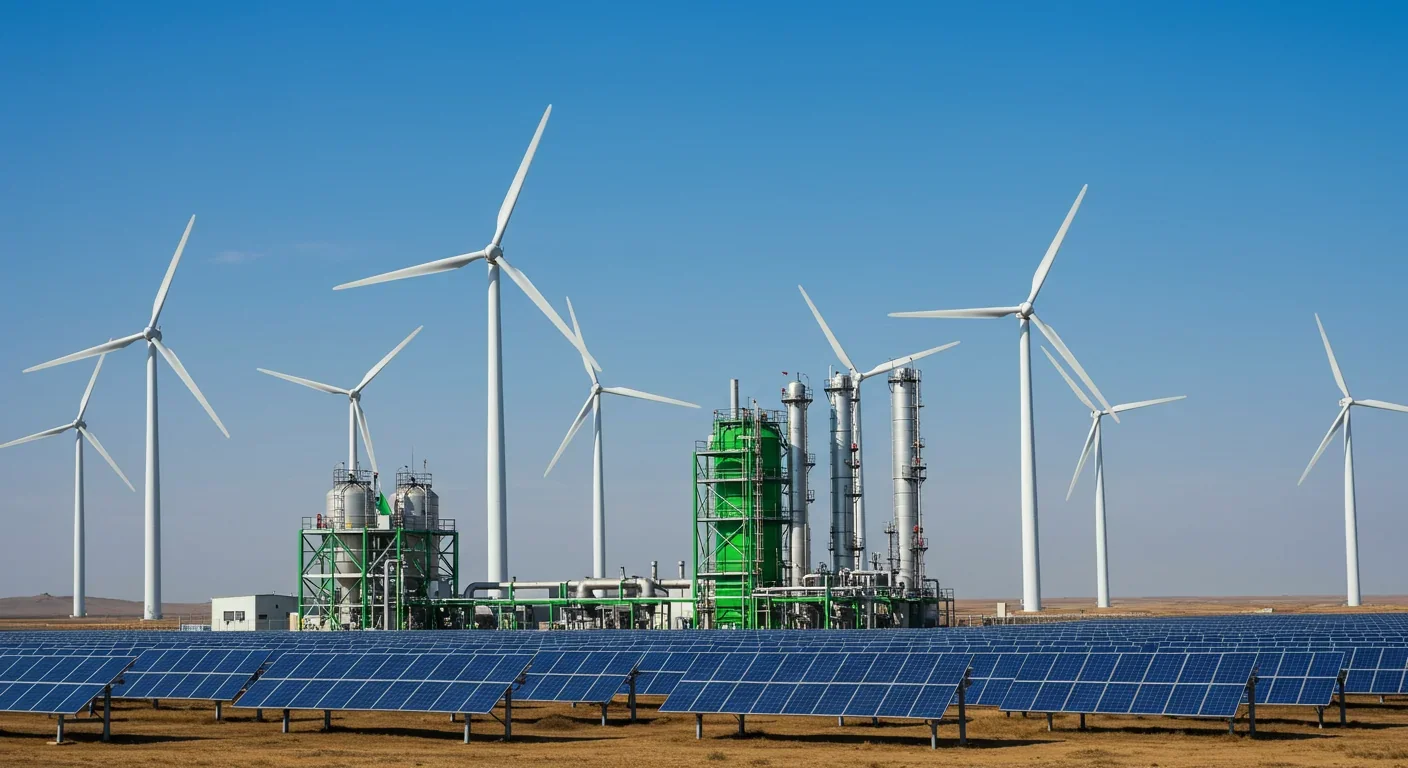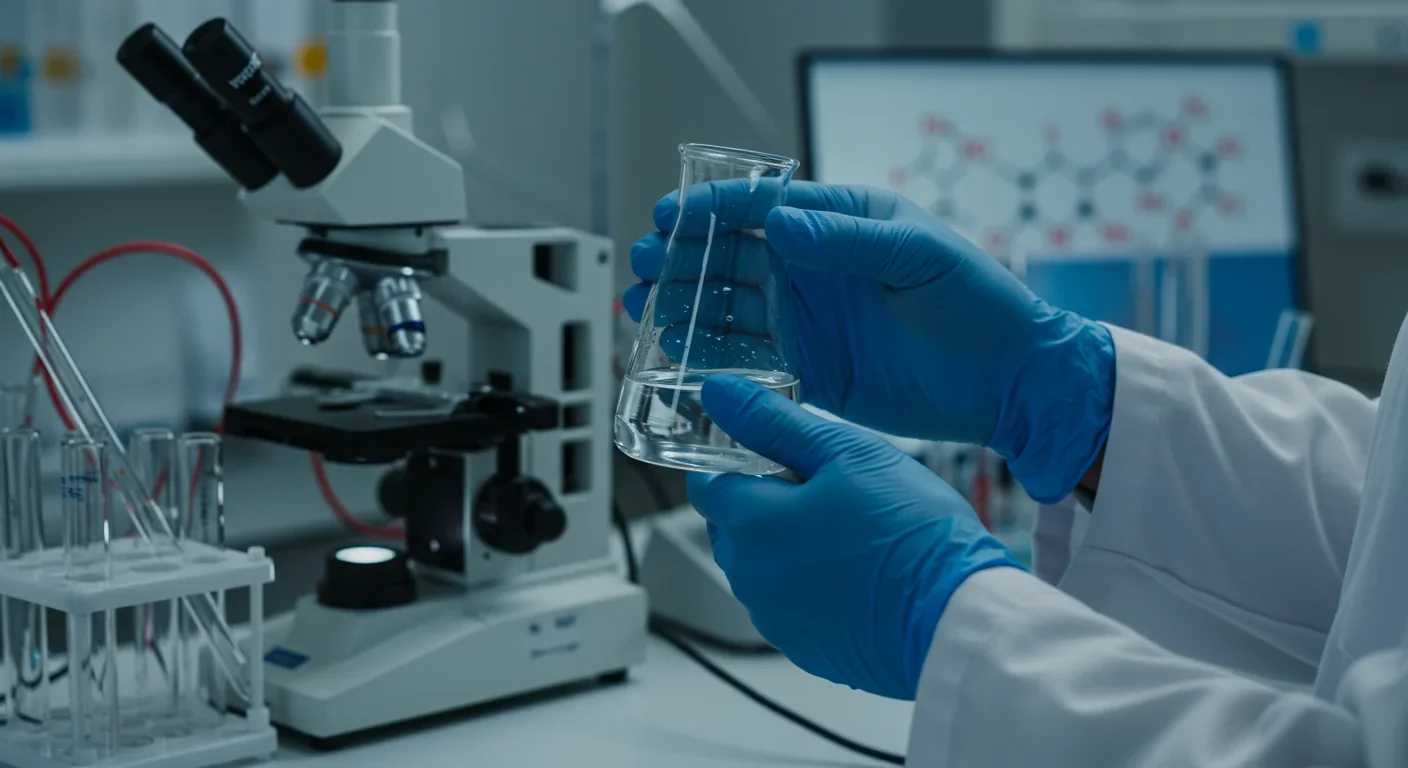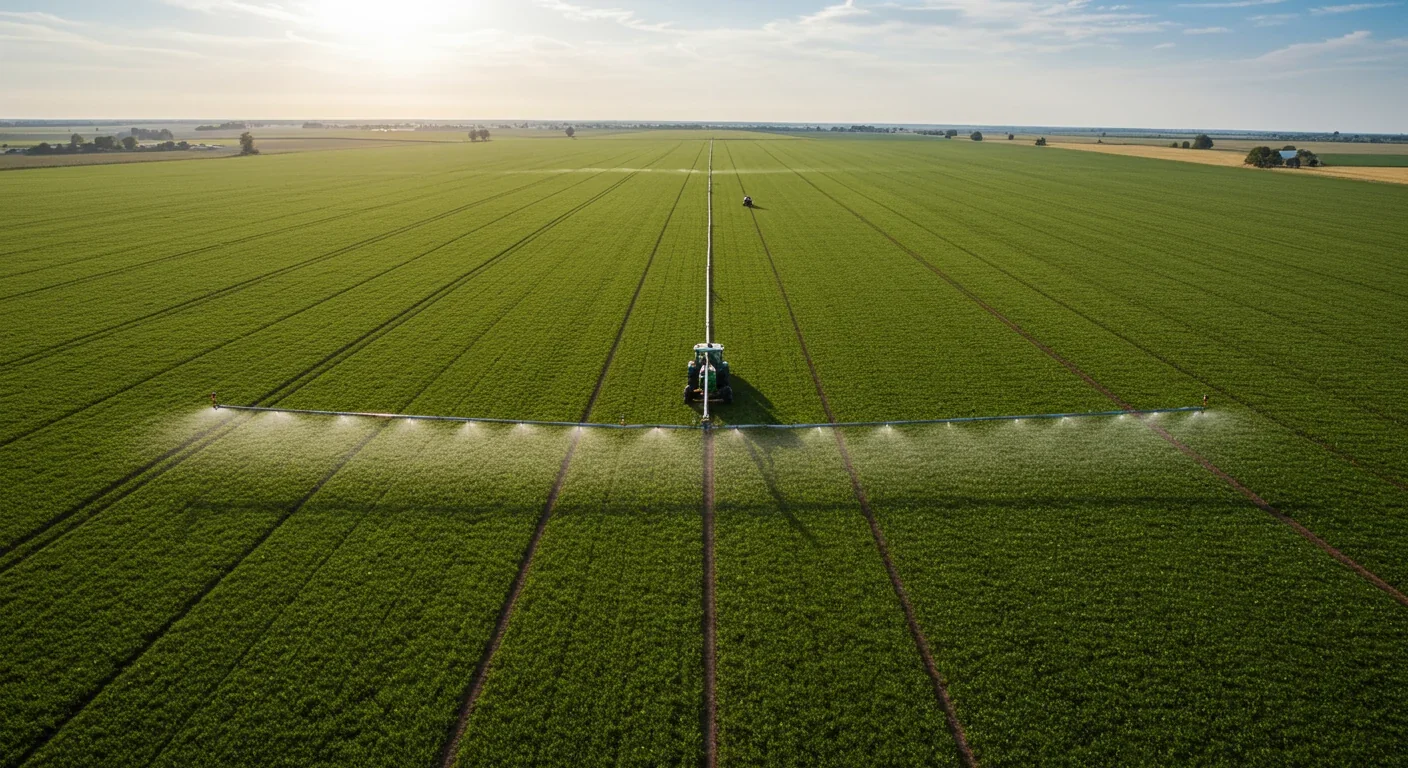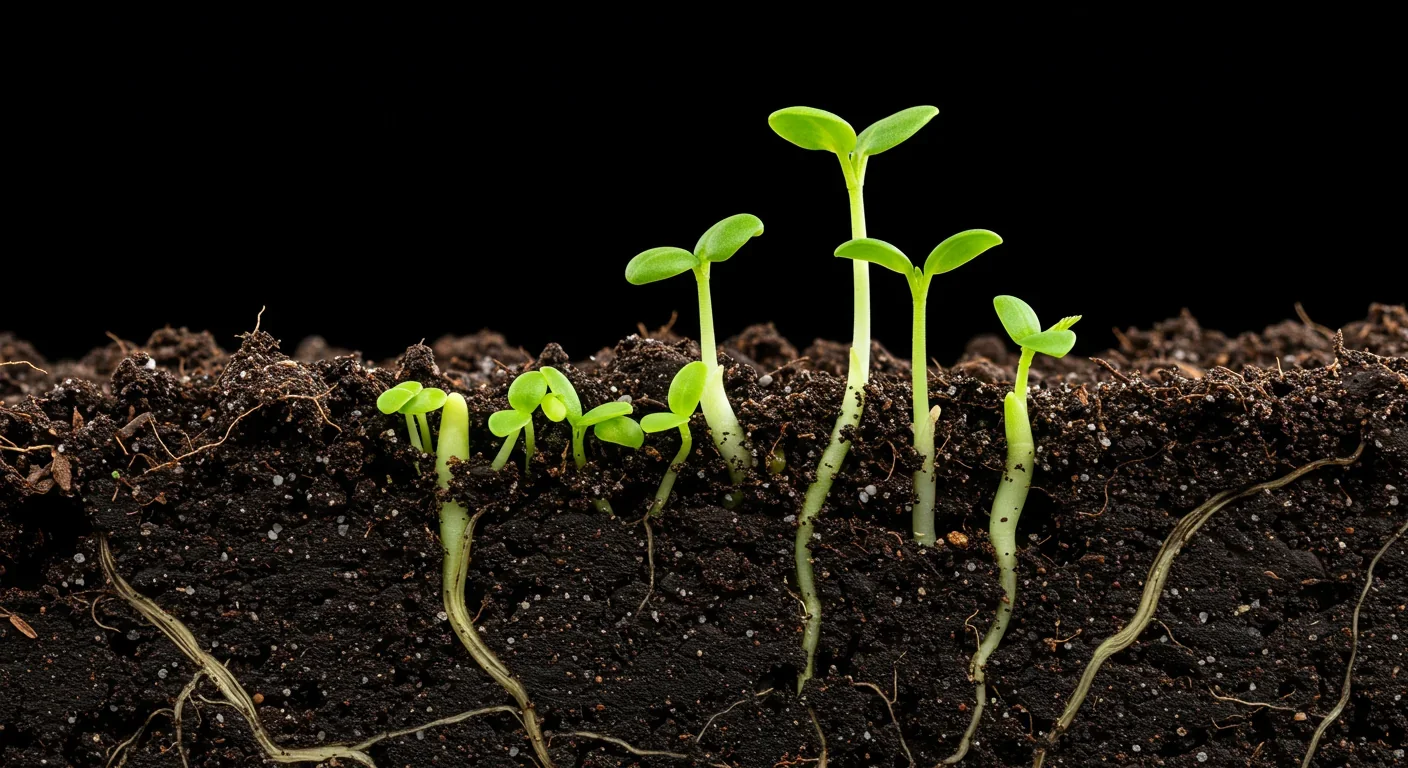Intercropping Boosts Farm Yields 20-50% While Building Resilience

TL;DR: China's world-largest green ammonia plant proves electrochemical fertilizer production works at commercial scale today. Using renewable electricity instead of fossil fuels, the technology could eliminate 450 million tons of annual CO2 emissions while transforming agriculture and enabling distributed food production.

By 2030, the fertilizer feeding half the world's population might come from wind turbines and solar panels instead of natural gas refineries. In Inner Mongolia, China's Envision Energy just flipped the switch on the world's largest green ammonia plant, producing 320,000 tons annually without burning a single fossil fuel molecule. This isn't a distant dream or laboratory curiosity. It's happening now, and it could eliminate one of agriculture's dirtiest secrets: the 450 million tons of CO2 emissions pumped into the atmosphere every year just to grow food.
For over a century, we've made ammonia the same way. The Haber-Bosch process, invented in 1909, forces nitrogen and hydrogen together at extreme temperatures (450-550°C) and crushing pressures (150-250 bar). It's brutally effective but energy-hungry, consuming roughly 2% of global energy and producing an equivalent slice of CO2 emissions. That's more than the entire aviation industry. The kicker? We need ammonia. It's the foundation of synthetic fertilizers that feed about 50% of humanity. Without it, billions would face food shortages.
Enter electrochemistry. Instead of burning natural gas to generate hydrogen and heat, researchers are using renewable electricity to drive nitrogen fixation at room temperature and normal pressure. The chemistry is elegant: pass electricity through water to make hydrogen, then combine it with nitrogen from the air using specialized catalysts. No methane required. No CO2 produced. Just water, air, electricity, and a scientific revolution that's been 30 years in the making.
The Haber-Bosch process is a thermal hammer. It uses heat and pressure to break nitrogen's triple bond, one of the strongest in chemistry. Green ammonia takes a different approach: electrochemical finesse.
There are two main pathways. The first replaces fossil-derived hydrogen with green hydrogen from water electrolysis, then feeds it into a modified Haber-Bosch reactor. This "green Haber-Bosch" approach keeps the proven synthesis step but eliminates 80-90% of emissions by sourcing hydrogen renewably. Companies like Envision Energy use this method because it's commercially ready and scalable right now.
The second pathway is more radical: direct electrochemical nitrogen reduction. Instead of making hydrogen first, electrodes coated with specialized catalysts drive nitrogen fixation in a single step. Scientists at UC Berkeley developed metal-organic frameworks that bind and release ammonia at just 175°C, compared to the 300-500°C traditional processes require. Researchers in Australia created a lithium-mediated system using phosphonium ionic liquids that achieved continuous production for 72 hours straight, a 30-fold improvement over earlier attempts.
The catalyst is everything. Single-atom catalysts, where individual metal atoms sit on carbon or nitrogen supports, show remarkable efficiency. Gold atoms on carbon nitride substrates achieve ammonia yields 22.5 times higher than conventional gold nanoparticles. Molybdenum, iron, and ruthenium catalysts on various supports are showing limiting potentials as low as -0.17 volts, meaning they need minimal electrical push to drive the reaction.
But here's where it gets tricky: efficiency. The best electrochemical systems today achieve Faradaic efficiencies around 30-99%, meaning that percentage of electrons actually make ammonia instead of side products like hydrogen gas. That sounds good until you realize Haber-Bosch converts 97% of inputs to ammonia. The gap is closing, but it's not closed yet.
Walk through the Envision Energy facility in Chifeng and you won't find any fossil fuel infrastructure. The plant runs entirely off-grid, powered by wind turbines, solar panels, and battery storage. When wind speeds pick up, surplus electricity doesn't go to waste. An AI system redirects it to produce liquid nitrogen for storage, buffering the plant against renewable intermittency. When the sun dips or wind dies, stored energy keeps ammonia flowing.
This isn't a pilot project. The plant produces enough ammonia to fertilize millions of acres. By 2028, Envision plans to expand capacity to 1.5 million tons annually. Japan's Marubeni Corporation has already signed an offtake agreement, planning to use the ammonia for fertilizers, chemicals, and as a carbon-free shipping fuel.
Other players are moving fast. In Spain's Andalusian Green Hydrogen Valley, Cepsa and Yara are building a 2-gigawatt electrolysis facility with €3 billion in investment. Norway's Yara Clean Ammonia received 283 million Norwegian kroner from the government to develop green ammonia projects. In India, Greenko ZeroC is partnering with Yara to produce 250,000 tons per year at their Kakinada plant.
Australia's getting in on the action too. The Yuri project in Western Australia, backed by a 47.5-million-dollar grant from ARENA, will use a 10-megawatt alkaline electrolyzer producing 640 tons of hydrogen annually. In Iowa, Starfire Energy's 20-ton-per-day facility in Eagle Grove connects directly to the state's wind-heavy grid, which supplies 59% of Iowa's electricity.

Even more intriguing are the modular approaches. Germany's Siemens built a wind-powered pilot plant housed in shipping containers, generating 30 kilograms daily. This containerized design could be shipped anywhere, set up near farms, and powered by local renewable sources. Compare that to conventional ammonia plants, which produce over 3,000 tons per day in single production lines and require massive infrastructure.
Right now, green ammonia costs more than conventional "gray" ammonia. How much more? That depends on electricity prices, capital costs, and carbon pricing policies. In regions with cheap renewables and strong carbon policies, the gap narrows considerably.
The key variable is electricity cost. Ammonia production is energy-intensive no matter how you make it. Green ammonia plants need abundant, cheap renewable power to compete. Inner Mongolia, where Envision built its plant, has excellent wind and solar resources. Spain's Andalusia, Australia's Pilbara, and Iowa's wind corridor share this advantage: renewable electricity costs have plummeted to $20-40 per megawatt-hour in these regions.
Capital costs are falling too. Electrolyzer prices have dropped 40% in the past five years. As green hydrogen production scales up globally, equipment manufacturers are achieving economies of scale. The green ammonia market is projected to grow at a compound annual growth rate of 77.78% from 2025 to 2033, reaching $168 billion by 2033. That kind of growth curve drives innovation and cost reduction fast.
Carbon pricing changes the calculus entirely. In jurisdictions with carbon taxes or emissions trading schemes, gray ammonia's hidden climate cost becomes visible. Europe's carbon price fluctuates around €80-100 per ton of CO2. Traditional ammonia production emits roughly 1.8-2.4 tons of CO2 per ton of ammonia. That's €144-240 in carbon costs per ton of ammonia, suddenly making the green premium much smaller or nonexistent.
There's another economic angle: stranded asset risk. Ammonia plants are long-term investments with 30-40 year lifespans. Building new fossil-based capacity today means betting those assets won't be obsolete before they pay off. With emissions regulations tightening globally and fertilizer buyers increasingly demanding sustainable options, that's a risky bet.
Government support is accelerating the transition. China, the European Union, Australia, and the United States are all offering grants, loans, and tax incentives for green ammonia projects. These policies compress the timeline from "someday economical" to "competitive today" in many markets.
Ammonia isn't just an industrial chemical. It's the invisible foundation of modern agriculture. About 70-80% of global ammonia production becomes fertilizer, roughly 150 million tons per year. That fertilizer produces grain that feeds billions. Green ammonia doesn't just reduce emissions; it makes food production sustainable.
Consider the supply chain transformation. Today's ammonia travels vast distances from mega-plants to distribution centers to farms. This centralized model made economic sense when scale was everything. But green ammonia enables decentralization. Solar and wind resources are distributed differently than fossil fuel deposits. A farmer in Kenya could potentially have an on-farm ammonia production unit powered by local solar panels, eliminating transportation costs and supply chain vulnerabilities.
This matters enormously for food security. Many developing nations import expensive synthetic fertilizers, draining foreign exchange reserves and leaving farmers vulnerable to price spikes. Rwanda, for instance, spends significant portions of its agricultural budget on imported fertilizer. Local green ammonia production could transform that economic equation, especially in regions with abundant renewable resources but limited fossil fuel access.
The nitrogen cycle itself gets healthier. Current fertilizer use is inefficient; much applied nitrogen runs off into waterways, creating dead zones in rivers and coastal areas. On-demand, distributed ammonia production could enable precision application matched to crop needs, reducing over-fertilization and environmental damage.
Green ammonia isn't just a fertilizer story. It's a hydrogen carrier and energy vector, which makes it central to the broader clean energy transition.
Hydrogen is notoriously difficult to store and transport. As a gas, it's the lightest element, requiring extreme pressure or cryogenic temperatures. Ammonia solves this problem elegantly. It's liquid at -33°C or at modest pressures, far easier to handle than hydrogen itself. One cubic meter of liquid ammonia contains more hydrogen than the same volume of liquid hydrogen.
This makes ammonia attractive for maritime shipping, which accounts for about 3% of global emissions and has few decarbonization options. Ships can burn ammonia in modified engines or use it in fuel cells. The International Maritime Organization's 2020 emission standards are driving interest in ammonia as a zero-carbon bunker fuel.

Heavy industry is watching too. Steel, cement, and chemical production need high-temperature heat that's hard to electrify. Ammonia combustion or cracking it back to hydrogen could provide that heat without emissions. Some envision ammonia as seasonal energy storage: produce it when renewables are abundant, store it cheaply, then convert it back to power when needed.
Japan is particularly bullish, viewing ammonia as a way to import renewable energy. The country has limited domestic renewable resources but strong industrial capabilities. Importing green ammonia from Australia, Middle East, or Southeast Asia could decarbonize Japanese industry while creating export markets for sunny, windy nations.
Despite the progress, significant challenges remain. Efficiency tops the list. Direct electrochemical nitrogen reduction still lags Haber-Bosch in conversion rates. Getting from 30-50% Faradaic efficiency to 95%+ requires better catalysts, optimized reactor designs, and deeper understanding of the reaction mechanisms.
Catalyst durability is another issue. Many promising catalysts degrade over time, poisoned by impurities or structural changes. Continuous operation for months or years, not just days or weeks, is essential for commercial viability. Researchers are exploring self-healing catalysts and more robust support materials.
Scale remains daunting. Envision's 320,000-ton plant is impressive but tiny compared to global ammonia production of roughly 180-200 million tons annually. To decarbonize the entire industry requires building hundreds of such plants, along with the renewable electricity infrastructure to power them. That's a multi-trillion-dollar, multi-decade undertaking.
Intermittency of renewable energy poses operational challenges. Haber-Bosch plants run most efficiently at steady state. Ramping up and down with solar and wind availability reduces efficiency and increases wear. Envision's AI-driven approach and energy storage help, but optimizing ammonia production for variable power remains an active research area.
Infrastructure and supply chains need development. Green ammonia requires different handling equipment, storage facilities, and distribution networks than traditional feedstocks. Ports, ships, and end-use facilities must adapt. This chicken-and-egg problem—nobody wants to invest in infrastructure until production scales, but production won't scale without infrastructure—requires coordinated policy and industry action.
Government policy will make or break the green ammonia transition. Carbon pricing creates market pull by making fossil-based ammonia more expensive. Renewable energy mandates and grid integration policies determine whether cheap clean electricity is available. Production subsidies and loan guarantees reduce the financial risk of first-mover projects.
The European Union's Green Deal and Carbon Border Adjustment Mechanism will effectively impose carbon costs on imported ammonia, favoring domestic green production. China's 14th Five-Year Plan includes explicit targets for green hydrogen and ammonia development. The U.S. Inflation Reduction Act offers production tax credits for clean hydrogen, which indirectly supports green ammonia.
Certification and standards matter too. How do you prove ammonia is "green"? What carbon intensity threshold qualifies? The International Organization for Standardization and various industry groups are developing frameworks, but inconsistent standards across regions create trade friction and greenwashing risks.
Agricultural subsidy reform could accelerate adoption. Many countries subsidize synthetic fertilizers, artificially depressing prices and removing incentives for sustainable alternatives. Redirecting those subsidies toward green fertilizers or precision agriculture techniques would shift market dynamics rapidly.
The honest answer is: some already do, most won't for years, and universal adoption is a decade-plus away.
Early adopters in regions with strong climate policies and good renewable resources—think European organic farms, California specialty crops, or Australian operations near new green ammonia plants—might access green fertilizer within 1-3 years. Envision plans to begin exports in Q4 2025, so international markets will see product soon.
Mainstream availability for conventional agriculture in developed nations probably arrives in the 5-10 year window, assuming continued investment and policy support. That timeline depends on building enough production capacity to matter. A few pilot plants don't move the needle on global fertilizer markets; you need industrial scale.
Developing nations face longer timelines unless they leapfrog to distributed production models. Large-scale centralized plants require enormous capital and infrastructure. But modular, containerized systems could deploy faster in off-grid rural areas, potentially reaching smallholder farmers sooner than in places with entrenched fossil infrastructure.
Price parity is the critical milestone. Once green ammonia reliably costs the same or less than conventional ammonia—accounting for carbon costs, subsidies, and local conditions—adoption will accelerate naturally. Market projections suggest this crossover happens in the 2030-2035 range for many regions, earlier with aggressive climate policy.
The green ammonia revolution isn't just about cleaner fertilizer. It's about reimagining industrial chemistry, agriculture, and energy systems simultaneously. The technology exists. The economics are approaching viability. The climate imperative is undeniable.
What happens next depends on investment, policy, and thousands of engineering and scientific decisions. Will governments provide the policy certainty and financial support to scale production? Will farmers demand sustainable inputs, creating market pull? Will catalysts improve enough to make direct electrochemical synthesis competitive? Will renewable energy buildout proceed fast enough to power the transition?
The 450 million tons of annual CO2 emissions from ammonia production represent both a massive problem and a massive opportunity. Unlike some climate challenges where solutions remain theoretical, green ammonia is real, operating at commercial scale, and improving rapidly. The Haber-Bosch process transformed global food production in the 20th century, enabling population growth that would have been impossible otherwise. The green ammonia revolution could be this century's equivalent transformation: feeding billions while healing the atmosphere instead of poisoning it.
If you eat food—and you do—this technology will shape your future. The fertilizer behind your next meal might come from sunshine and wind instead of fossil fuels. That shift won't happen overnight, but it's already underway. The question isn't whether green ammonia will replace conventional production, but how fast we make it happen and whether it arrives in time to meet climate goals.
The revolution has begun. Now we need to scale it.

Curiosity rover detects mysterious methane spikes on Mars that vanish within hours, defying atmospheric models. Scientists debate whether the source is hidden microbial life or geological processes, while new research reveals UV-activated dust rapidly destroys the gas.

CMA is a selective cellular cleanup system that targets damaged proteins for degradation. As we age, CMA declines—leading to toxic protein accumulation and neurodegeneration. Scientists are developing therapies to restore CMA function and potentially prevent brain diseases.

Intercropping boosts farm yields by 20-50% by growing multiple crops together, using complementary resource use, nitrogen fixation, and pest suppression to build resilience against climate shocks while reducing costs.

The Baader-Meinhof phenomenon explains why newly learned information suddenly seems everywhere. This frequency illusion results from selective attention and confirmation bias—adaptive evolutionary mechanisms now amplified by social media algorithms.

Plants and soil microbes form powerful partnerships that can clean contaminated soil at a fraction of traditional costs. These phytoremediation networks use biological processes to extract, degrade, or stabilize toxic pollutants, offering a sustainable alternative to excavation for brownfields and agricultural land.

Renters pay mortgage-equivalent amounts but build zero wealth, creating a 40x wealth gap with homeowners. Institutional investors have transformed housing into a wealth extraction mechanism where working families transfer $720,000+ over 30 years while property owners accumulate equity and generational wealth.

AlphaGo revolutionized AI by defeating world champion Lee Sedol through reinforcement learning and neural networks. Its successor, AlphaGo Zero, learned purely through self-play, discovering strategies superior to millennia of human knowledge—opening new frontiers in AI applications across healthcare, robotics, and optimization.